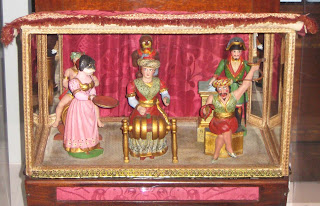Beauty editor Nicole Emmerling has invited Willow McQuade to visit with us today. Willow is a naturopathic doctor and the star of Chrystle Fiedler’s new Nature Remedy Mysteries.
Chrystle Fiedler is the author of the newly released Death Drops: A Natural Remedies Mystery. She’s also the author of The Complete Idiot’s Guide To Natural Remedies and the co-author of Beat Sugar Addiction Now!, the Beat Sugar Addiction Now! Cookbook and The Country Almanac of Home Remedies. Her magazine articles featuring natural remedies have appeared in many national publications including Better Homes and Gardens, Natural Health, Vegetarian Times and Remedy. To learn more about Chrystle, visit her at her website and blog.
Chrystle Fiedler is the author of the newly released Death Drops: A Natural Remedies Mystery. She’s also the author of The Complete Idiot’s Guide To Natural Remedies and the co-author of Beat Sugar Addiction Now!, the Beat Sugar Addiction Now! Cookbook and The Country Almanac of Home Remedies. Her magazine articles featuring natural remedies have appeared in many national publications including Better Homes and Gardens, Natural Health, Vegetarian Times and Remedy. To learn more about Chrystle, visit her at her website and blog.
Chrystle is offering a copy of Death Drops: A Natural Remedies Mystery to one lucky reader who posts a comment. -- AP
A big thank you to Anastasia Pollack for welcoming me to her blog today! I'm a naturopathic doctor named Willow McQuade and I'm the star of my own book called Death Drops: A Natural Remedies Mystery. I'm a big believer in natural cures and I thought that you would enjoy these recipes for different kinds of baths. Luxuriating in a bath tub can help you rest, renew and heal your body. You will look and feel better!
Flower Power Bath: Let the stress drain away with a bath full of fresh flowers, orange or lemon peels. You can also use lilac, dandelion, daisies, honeysuckle, jasmine, camellia, or lavender.
Dry Skin Bath: Herbs can have a soothing lubricating effect on the skin. Moisturize by adding to the bath calendula flowers, chamomile flowers, comfrey leaves, elder flowers, fennel seed, jasmine flowers, lavender flowers, oatmeal, rose buds, and violet leaves.
Baking Soda Bath: This alkalinizing and detoxifying bath can help calm allergic reactions, chicken pox, eczema, hives, itchy skin, insect bites, poison ivy, sunburn, and fungal infections. Baking soda baths also aid weight loss. Use one pound per bath.
Cold and Flu Bath: Try these natural remedies when you want to soothe deep muscle aches that often accompany viral infections. Add Epsom salts, ginger root, marjoram, mustard seed powder, pine needles, and thyme leaves to your bath.
Detox Bath: Consider these cleansing herbs in the bath to help the body get rid of toxins. Try apple cider vinegar, cypress essential oil, Epsom salts, ginger root, grapefruit, juniper, lavender flowers, lemon peel, rosemary leaves, sage leaves, seaweed (buy in a natural food store unless you live close to the ocean), and tea tree essential oil.
Epsom Salts Bath: Relax sore muscles, soften the skin and detoxify. If you have diabetes, hypertension or heart disease rinse off after the bath. Follow package directions.
If you have any medical conditions and are not sure if you should try any of these baths, please see your health practitioner. This is in no way meant to be medical advice.
About Death Drops: A Natural Remedies Mystery:
Dr. Willow McQuade, N.D., a twenty-eight-year-old naturopathic doctor specializing in natural remedies, has decided to take sabbatical and visit her Aunt Claire, the owner of Nature’s Way Market and Cafe in idyllic Greenport, Long Island. But the idea of rest and relaxation is quickly forgotten when Willow arrives from a morning meditative walk to discover her Aunt Claire dead in the store, a strange almond-like smell emanating from her mouth and a bottle of flower essences by her side. Despite her Zen nature and penchant for yoga, Aunt Claire had a knack for getting into confrontations with folks. An activist, she held weekly meetings for different causes every week in the store. The police want to believe the death is accidental—but Willow thinks she may have been poisoned.
Things get worse when Aunt Claire’s valuable recipe for a new natural age-defying formula, Fresh Face, is stolen during a store break-in, and an attempt is made on Willow’s life. Desperate for a way out of the mess, she turns to handsome young cop Jackson Spade. Together the two set about solving the case the natural way—through a combination of hard work, common sense, and a dose of luck.
Thanks for joining us today, Willow. I can’t wait to soak in some of those relaxing baths! What about you, readers? Post a comment for a chance to win a copy of Death Drops: A Natural Remedies Mystery. -- AP








.jpg)
.jpg)














